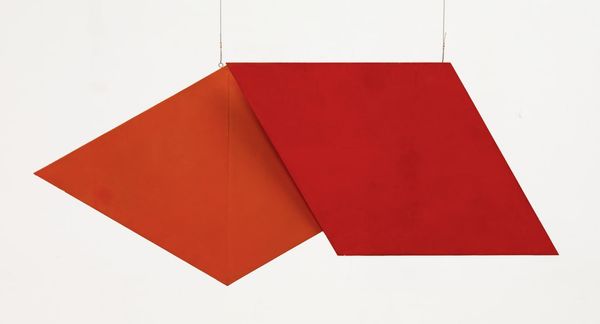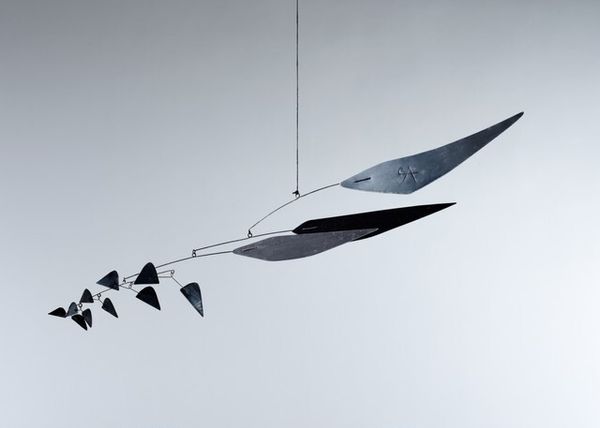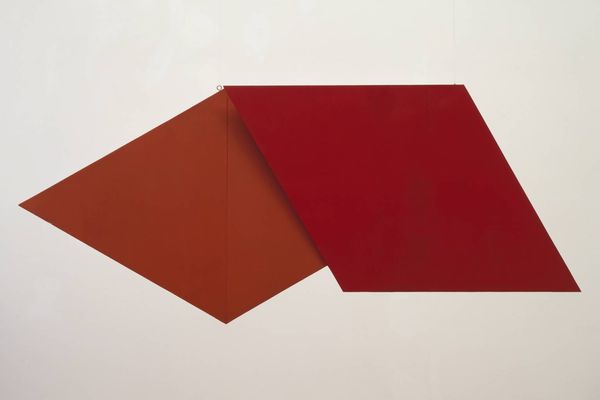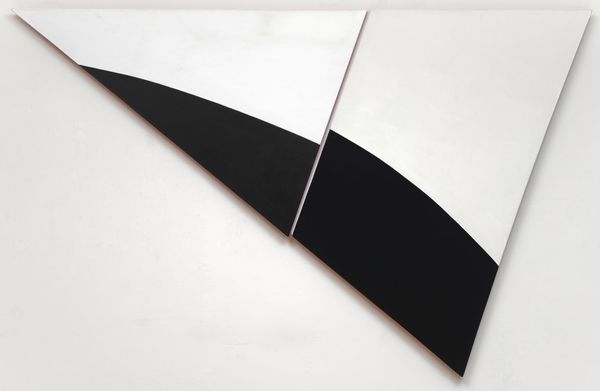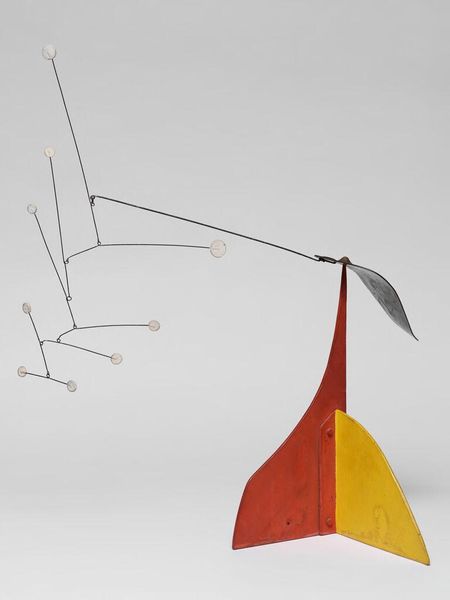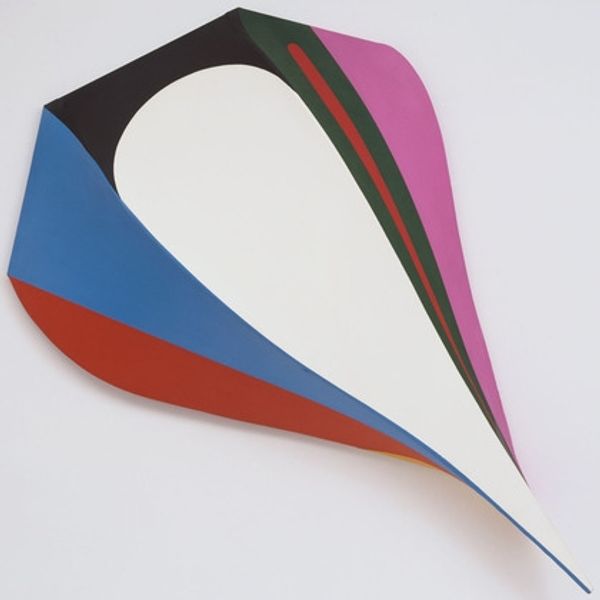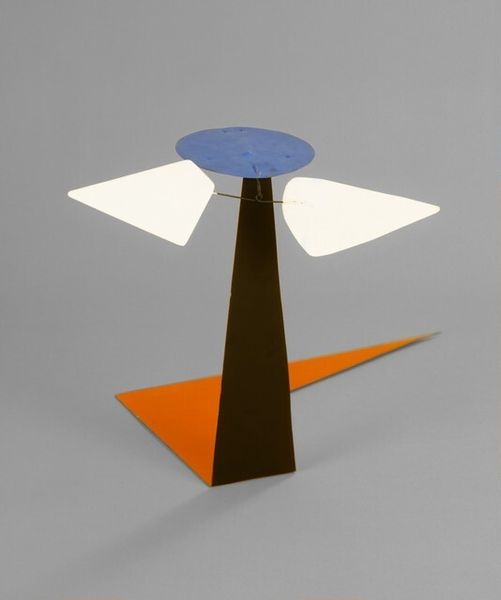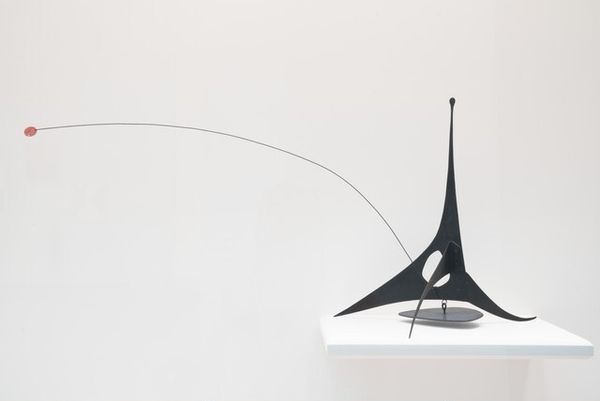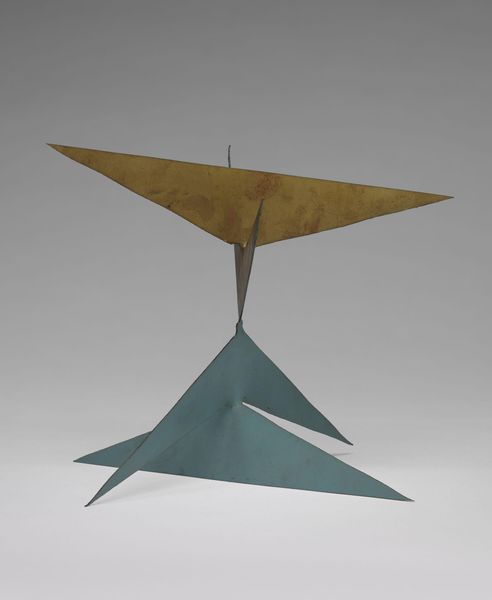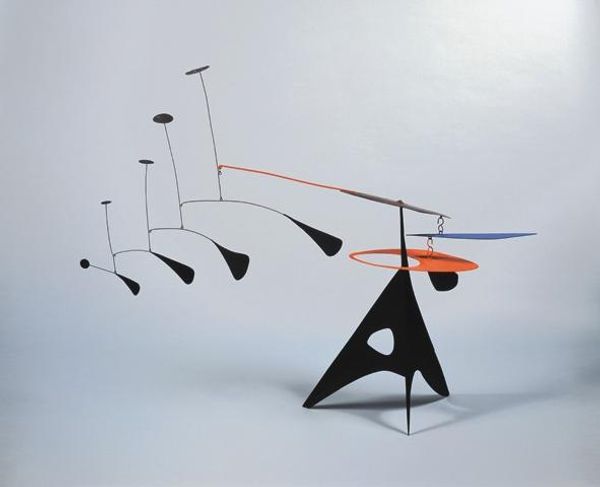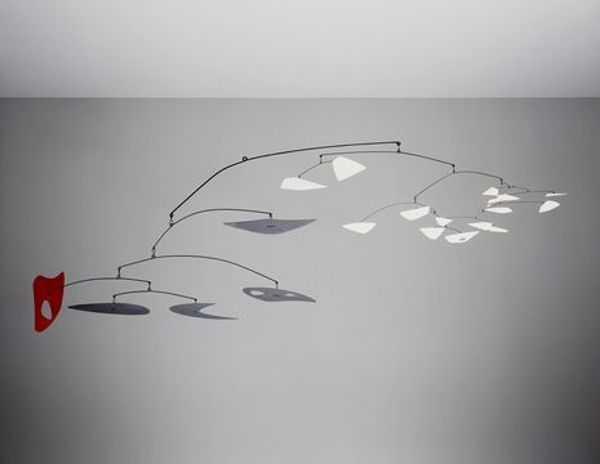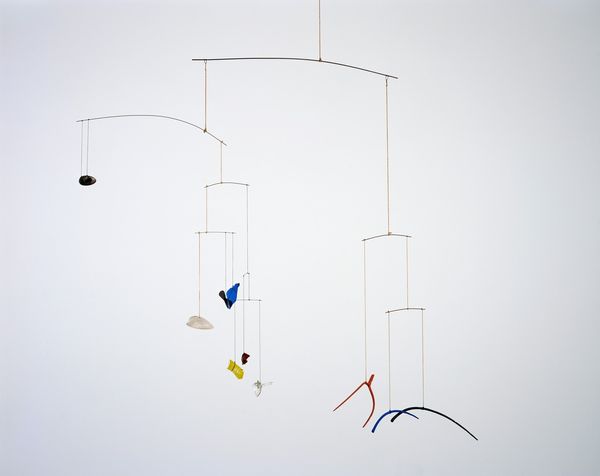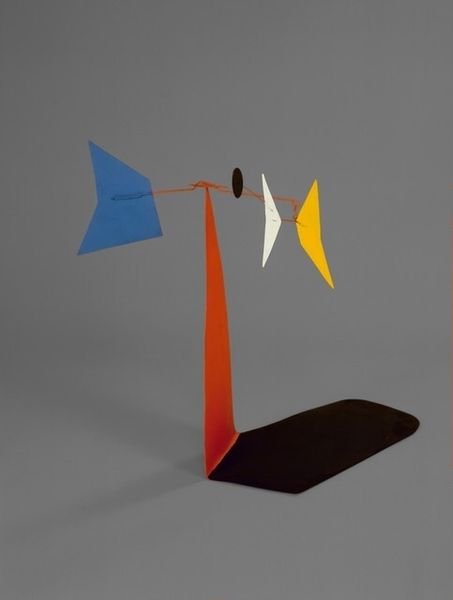
mixed-media, metal, paper, mobile
#
abstract-expressionism
#
kinetic-art
#
mixed-media
#
metal
#
constructivism
#
paper
#
form
#
mobile
#
geometric-abstraction
#
modernism
Copyright: Bruno Munari,Fair Use
Editor: Here we have Bruno Munari's *Useless Machine*, made in 1947. It’s a mobile, constructed from paper and metal, with abstract, reddish, geometric shapes suspended in space. The piece strikes me as so elegantly simple, almost playful in its defiance of functionality. What do you make of it? Curator: It's a fascinating work, especially considering its historical context. Think about post-war Europe, a period grappling with the role of technology and industry after immense destruction. Munari, through this "useless" machine, seems to be critiquing the blind faith in progress that had led to such devastation. He is asking us to consider art's place amidst these shifts, to value playful inquiry, even when "useless," over relentless production. Editor: So, it’s a commentary on the dangers of unchecked technological advancement? Curator: In a way, yes, but it’s not just a straightforward condemnation. Consider how the piece engages with the Constructivist movement while subtly undermining its utopian ideals. Constructivism aimed to fuse art with industry. Munari co-opts the aesthetics—the geometric forms, the industrial materials—but he drains it of its productive function, presenting instead pure, whimsical movement. How do you think that gesture would be received in a society just starting to accept Modernism and abstract art? Editor: I imagine it would have been pretty subversive. Almost poking fun at the seriousness often associated with art, by presenting something intentionally pointless. Curator: Precisely. It compels us to re-evaluate the social and institutional functions of art. Is art meant solely to serve a practical purpose, or can it hold value simply by existing and prompting thought? The title is a direct, and likely intentionally inflammatory, commentary. Editor: That's such a clever approach. It makes you think about what we expect from art and how those expectations are shaped by cultural and historical forces. Curator: Exactly. It highlights how art museums play a role in shaping how we engage with political concepts of production. I didn’t consider Munari to be humorous previously, but I do now. Editor: Well, I certainly learned a lot about the hidden complexities in its simplicity. I am also pleased you found it humorous.
Comments
No comments
Be the first to comment and join the conversation on the ultimate creative platform.
